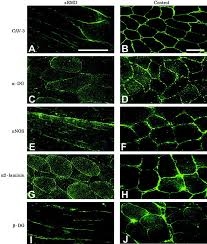Rippling muscle disease is a condition characterized by unusual sensitivity of the muscles to movement and pressure. The disease is an autosomal dominant disorder, meaning one copy of the altered gene that codes for this disease, CAV3, in each cell is enough to pass it on. The gene provides instruction for the production of caveolin-3 protein which is found in the membrane of muscle cells. The CAV3 mutations cause a shortage in the amount of caveolin-3 protein, which is responsible for organizing other molecules necessary for cell signaling and maintenance as well as calcium regulation in muscle cells. According to research, the reduction in calcium regulation results in the disruption of normal calcium levels in the muscle tissue which result in abnormal muscle contraction in response to stimuli.
The primary muscles affected are the proximal muscles close to the center of the body, especially the thigh muscles. For most people with this condition, stretching the muscles causes visual ripples to go across the muscle, lasting from five to twenty seconds. A sudden impact on the muscles results in the muscle mounding or having repetitive tensing, which could be painful and last up to thirty seconds.Of those with the disorder, many may have hypertrophy, or overgrown muscles, which are most likely in the calves. Those affected have an abnormal gait, such as walking on their tiptoes. Cramping, fatigue, and muscle stiffness are also common symptoms, especially after exercise or in cold weather.
The diagnosis of this disease is done by genetic testing as well as normal investigation by a physician into previous conditions, family history, and other relevant health factors. There is currently no specific treatments for this disorder, as it is a genetic disease. Management is the usual course of treatment and is dependent on each patient’s symptoms and needed support. Management techniques include weight control to avoid obesity, use of mechanical aids such as canes or walkers, social and emotional support communities, and physical therapy to promote mobility and prevent contractions.








